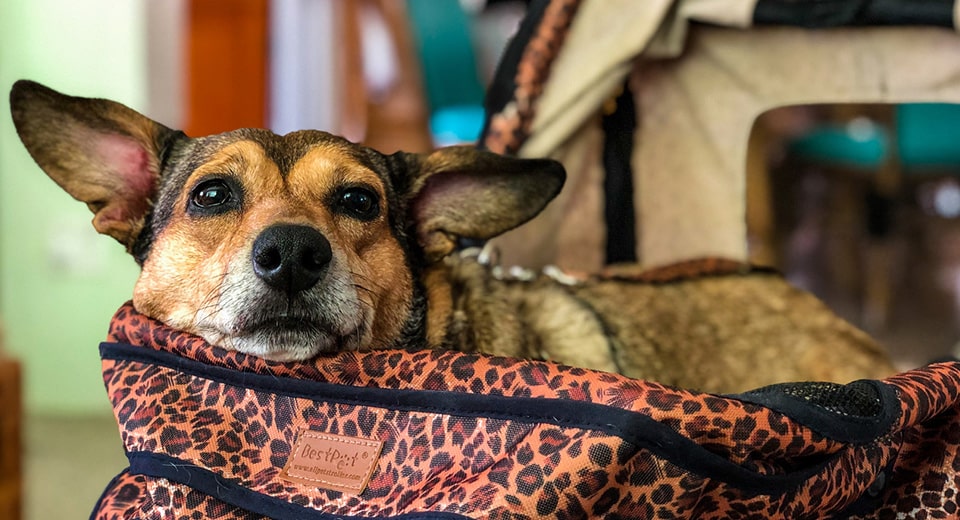
Time flies for pet parents. Suddenly, your fur baby is “middle-aged.” Arthritis, surgery, and life-limiting disease can all change your pet’s mobility-ability. Fortunately, there are assistive devices that pet hospice workers LOVE for their clients to use.
“Our mission as hospice veterinarians is to prevent suffering in companion animals and help maintain the highest possible quality of life. For this reason, whether it’s homemade or store-bought, we encourage our clients to be proactive with assistive devices,” said Dr. Laurie Brush, founder of Heaven at Home Pet Hospice.
Common home accommodations for senior pets or pets with life-limiting diseases typically include non-slip flooring, doggie diapers, elevated feeding bowls, and waterproof, supportive bedding. For mobility, there are three areas of focus:
1. Stairs and Ramps
Jumping from heights like a bed or an SUV puts force on joints at any age. Providing pet stairs and ramps helps avoid injury and inflammation. Ensure that the product you build or buy is rated for the size of your pet in terms of weight and width. Aim for a study structure with a non-slip surface. Training an able dog to use ramps and stairs is a good, proactive way to ensure future success.
2. Slings and Harnesses
Slings and harnesses are useful to help your pet get up, stay up, handle stairs, or rest when tired. They can also be helpful in managing post-operative pets who need to restrict mobility. One product, the Ginger Lead, was designed for just this purpose. Another favorite is the Help ‘Em Up Harness, which is ideal for arthritic and/or senior pets because it can be worn for long periods of time. It has 2 handles for you to help your dog stand, walk, navigate stairs, or get in the car.
3. Strollers & Wheelchairs
Dogs that cannot go for long walks due to arthritis or other medical conditions can still enjoy outings with you thanks to the advent of dog strollers. Wheelchairs are typically reserved for dogs with neurologic conditions that result in paralysis or severe weakness. The general rule of thumb is to encourage as much activity as possible, which will help preserve range of motion and keep your pet engaged and enriched.
These are just a few ways you can keep your pet on the move despite what ails them.
